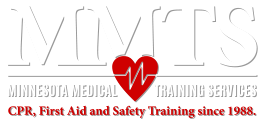We all know the heart is very important. Hopefully. In case you somehow didn’t know, the heart is very, very important. If it stops functioning (such as during cardiac arrest), your body begins systematically shutting down.
But how? What exactly makes the heart so important? Quite a few things, actually.
The Heart is the Generator for Your Body
Think of your body as a computer. Your brain is both the hard drive and the processor. It’s where everything is stored, all programs, files, memory. But it’s also what executes these actions, sending them through the rest of the system.
The heart, however, is the power supply. And without the power supply, nothing else works. The system won’t even turn on. Your heart creates actual electoral pulses that run through your body, supplying energy to everything.
The thing is, if that power is turned off, everything doesn’t just shut down; it starts to die. Your organs need a constant supply of blood and oxygen. When the heart stops, both of these processes start. Now, the body keeps a certain supply of oxygen stored up.
Blood, however, needs to keep moving. That’s why in cases of cardiac arrest and heart attacks, it’s more important that you keep the heart pumping through chest compressions than it is providing mouth to mouth.
How it Works
Ready to get a little technical?
The heart is made up of four chambers: the left and right atrium and the left and right ventricles. It’s protected and anchored to the chest by a double-walled sac called the pericardium. The different chambers of the heart are connected by valves. Valves also connect your heart to the rest of the body.
Blood is circulated by the heart through two pathways: the pulmonary circuit and the systemic circuit.
The pulmonary circuit is runs deoxygenated blood through the right ventricle to the lungs. Here it becomes oxygenized before returning to the left atrium.
In the systemic circuit, the oxygen infused blood leaves through the left ventricle into the aorta. From there, it enters the arteries and capillaries which supply your tissue with oxygen.
The deoxygenated blood then comes back to the heart and the process starts anew.
As a muscle, the heart uses some of the oxygen as well, which means it has its own arteries. When these arteries experience blockage, a heart attack can happen. It can also cause damage and scaring to the heart. Improper performance can also cause a person to go into cardiac arrest.
Save the Heart, Save a Life
The heart stops beating, the body starts dying. By performing CPR chest compressions, a person can keep the heart beating until emergency help arrives. This can be the difference between life and death.
With proper CPR training, virtually anyone is capable of performing that critical action. Get your CPR certification MN now by signing up for one of our classes here.

